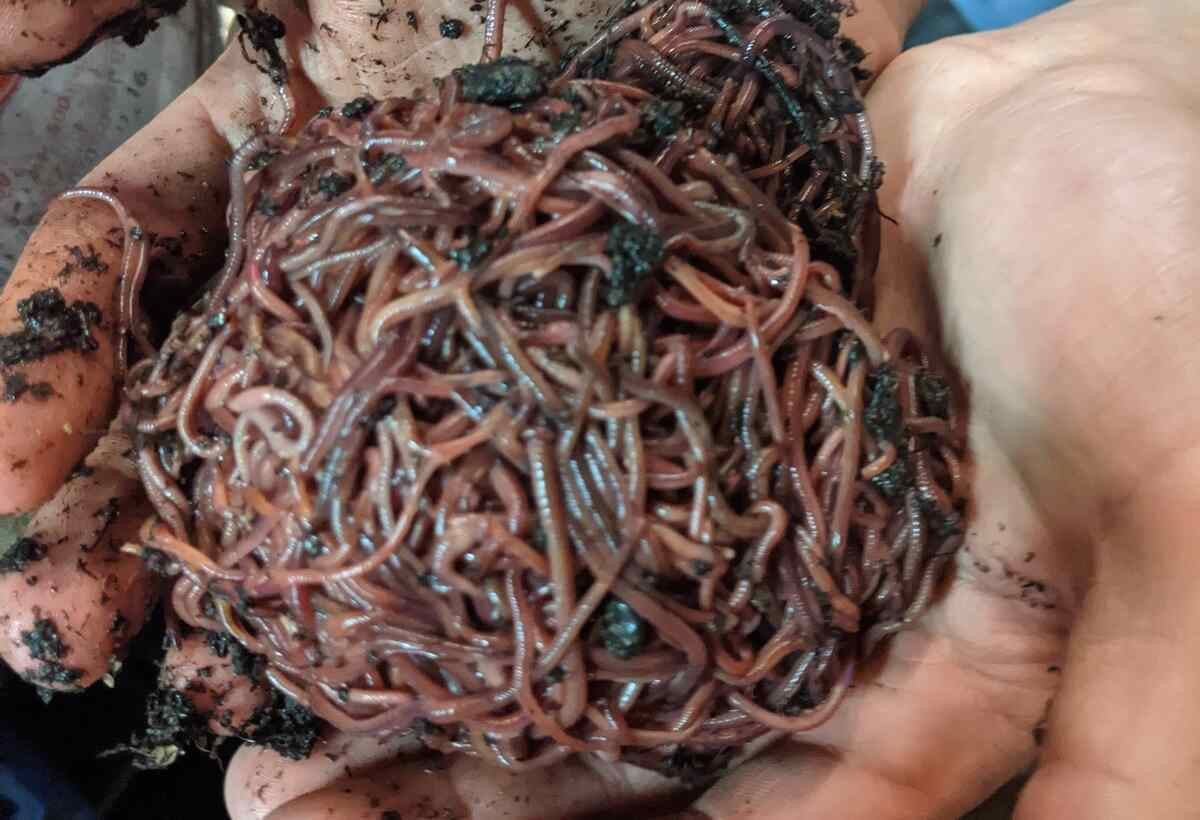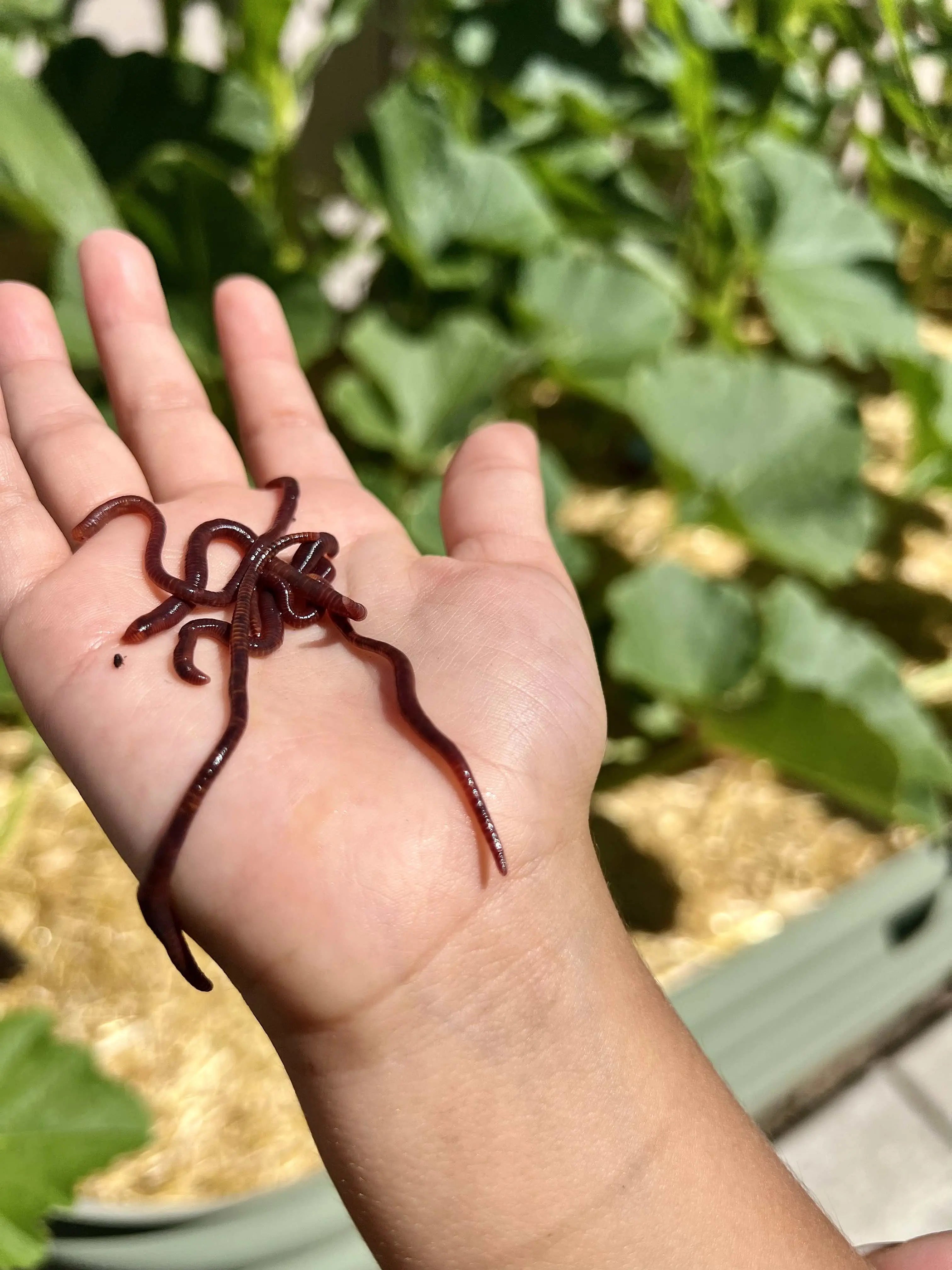Red Wigglers: The Unsung Heroes of Organic Waste Recycling
Red wigglers, or Eisenia fetida, function as crucial agents in the organic waste reusing process, changing discarded materials into valuable vermicompost. Their efficient malfunction of raw material not just improves dirt top quality however likewise adds to lasting waste administration practices. As the world progressively looks for options to battle waste buildup and improve farming efficiency, comprehending the role of these worms comes to be necessary. What devices enable them to grow in compost settings, and how can they be successfully used in both residential and commercial settings? Exploring these questions discloses the more comprehensive ramifications of vermicomposting in our ecological landscape.
What Are Red Wigglers?
The remarkable strength of red wigglers, medically called Eisenia fetida, underscores their crucial duty in organic waste recycling. These small, reddish-brown earthworms are commonly located in decomposing organic matter, such as garden compost stacks and manure lots. Lake Hickory Bait. Unlike other earthworm types, red wigglers thrive in nutrient-rich environments and are extremely efficient at damaging down natural products, making them essential for vermicomposting

(Red Wiggler Express)In addition to their role in waste reduction, red wigglers add to dirt health by enhancing dirt framework and aeration via their burrowing activities (Lake Hickory Bait). Their existence in composting systems not just enhances decomposition prices but likewise promotes a sustainable strategy to lose management, illustrating their value in environmental conservation efforts
Benefits of Composting With Worms
Composting with worms, especially red wigglers, supplies many benefits that boost both waste management and soil health and wellness. Initially, these worms effectively damage down natural waste, transforming it into nutrient-rich vermicompost that enriches soil. This procedure increases decomposition, enabling a faster recycling of kitchen scraps and other organic products contrasted to traditional composting methods.
Furthermore, the vermicompost created by red wigglers is including valuable bacteria, which help improve soil framework, oygenation, and wetness retention. This enhances the overall health and wellness of plants, promoting vigorous development and enhanced returns in gardens and farming setups. Moreover, making use of worms in composting decreases the production of greenhouse gases, such as methane, adding to a more sustainable waste administration system.

How to Beginning Vermicomposting
Establishing a vermicomposting system is an uncomplicated procedure that can produce considerable benefits for both waste monitoring and dirt enrichment. To begin, choose a suitable container, such as a plastic bin or wooden box, with sufficient ventilation openings to guarantee correct air movement. The dimensions need to ideally be about 2 feet by 3 feet, enabling ample room for the worms to thrive.
Next, prepare bed linens material, which can be composed of shredded newspaper, cardboard, or coconut coir. This bed linens must be dampened to develop a suitable environment for the worms. Once the bed linens remains in area, present red wigglers (Eisenia fetida) right into the container, usually around one pound of worms for every square foot of surface.
Complying with the positioning of worms, add organic waste, such as fruit and vegetable scraps, coffee premises, and smashed eggshells. With these steps, you will efficiently launch a vermicomposting system that adds to sustainable waste administration and enhances your soil.
Keeping a Healthy And Balanced Worm Bin
(Red Wiggler Express)Maintaining a worm container thriving needs regular attention and treatment to guarantee the health and wellness of the red wigglers and the performance of the composting procedure. Correct upkeep begins with monitoring the moisture degrees; the bin ought to be wet yet not saturated. A good general rule is to keep a consistency comparable to a wrung-out sponge.
Gently blending the bed linen and food scraps every couple of weeks avoids compaction and guarantees that all worms have access to oxygen. In addition, it is vital to feed the worms appropriately.
Temperature regulation is an additional crucial aspect. Red wigglers thrive in a series of 55 to 77 degrees Fahrenheit. If the container ends up being also hot or chilly, the worms may become stressed - Lake Hickory Bait. Periodically check for indications of health, such as worm population growth and the presence of healthy and balanced spreadings. By carefully managing these variables, one can preserve a robust and effective worm container.
Influence On Sustainable Living
The successful maintenance of a worm bin not just profits the health of red wigglers however also contributes considerably to lasting living methods. By reusing organic waste, such as cooking area scraps and lawn debris, red wigglers assist draw away significant quantities of material from landfills. This reduction in waste not only lowers greenhouse gas exhausts however likewise reduces the environmental worry related to waste management.
Moreover, the spreadings created by red wigglers serve as a nutrient-rich natural fertilizer, boosting dirt wellness and advertising plant growth. This natural alternative to chemical fertilizers sustains lasting farming and gardening methods, reducing reliance on artificial inputs that can damage environments. Furthermore, worm composting cultivates understanding of waste administration, encouraging individuals and communities to embrace more sustainable behaviors.

Verdict
In recap, red website link wigglers offer as vital contributors to natural waste recycling with their effective decomposition of natural products. Their ability to produce nutrient-rich vermicompost enhances dirt wellness and supports lasting agricultural practices. By incorporating vermicomposting into waste management methods, people and communities can substantially lower waste while advertising ecological sustainability. The duty of Eisenia fetida in fostering healthy and balanced ecosystems underscores the value of these organisms in attaining lasting living and boosting soil fertility.